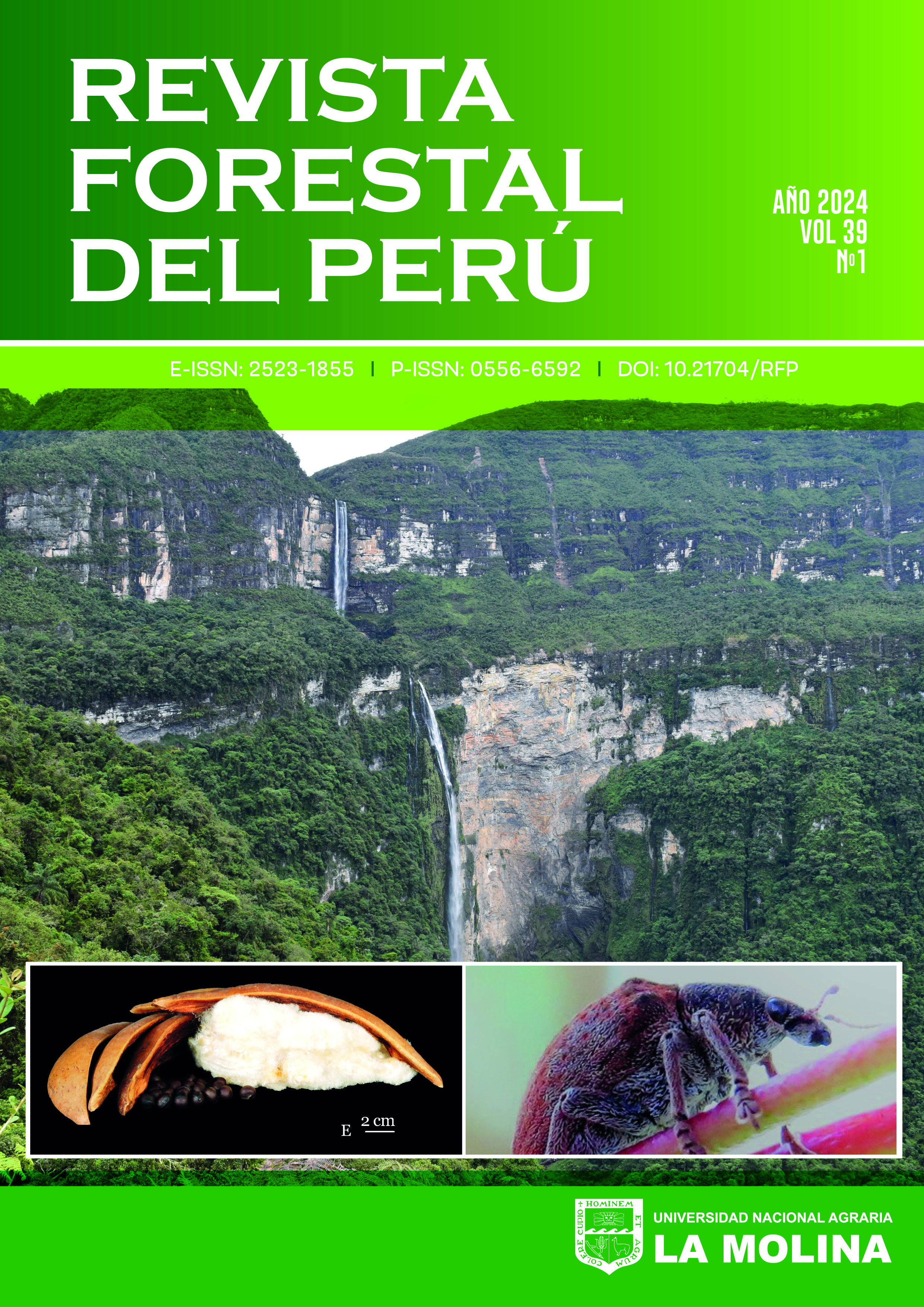Importance of artificial intelligence on forest biomass evaluation in Perú
DOI:
https://doi.org/10.21704/rfp.v39i1.2065Keywords:
artificial intelligence, machine learning, allometric equation, forest biomassAbstract
This article explains basic concepts of Artificial Intelligence (AI) linked to forest biomass estimation, and reviews three research studies carried out in tropical areas using AI models with traditional allometric equations. The results show that AI-based methods have greater accuracy and ability to relate key variables in forest biomass development than allometric equations. These facts highlight the need for Peruvian forest engineers to develop capabilities for the use of AI in the estimation of forest biomass in the country. This capacity building would imply a more demanding curriculum in mathematics, statistics and computer science for forest engineers; as well as the installation of an extensive network of permanent plots for the creation of a solid database of the variables involved in the development of forest biomass. It is proposed to start a discussion on the subject among the Peruvian forestry community in order not to lose opportunities in the carbon credits market, which, according to the cases reviewed, will require more precise measurements than the current ones carried out through the use of allometric equations.
Downloads
References
Greenfield, P. 2023. Revealed: more than 90% of rainforest carbon offsets by biggest certifier are worthless, analysis shows (en línea). The Guardian, Reino Unido. Consultado 23 ago. 2023. Disponible en https://www.theguardian.
Hurwitz, J; Kirsch, D. 2018. Machine Learning for Dummies. (en línea) Nueva Jersey, Estados Unidos. IBM Limited Edition. 75 p. Visitado el 3 de noviembre 2023. Disponible en https://www.ibm.com/downloads/cas/GB8ZMQZ3.
Liu, J; Yue, C; Pei, C; Li, X; Zhang, Q. 2023. Prediction of Regional Forest Biomass Using Machine Learning: A Case Study of Beijing, China. Forests 14(59):1008. DOI: https://doi.org/10.3390/f14051008.
Montaño, RA; Sanquetta, C R; Wojciechowski, J; Mattar, E.; Dalla, AP. 2017. Artificial Intelligence Models to Estimate Biomass of Tropical Forest. (en línea) POLIBITS 56:29-37. DOI: https://doi.org/10.17562/PB-56-4.
Rouahianen, L. 2018. Inteligencia Artificial, 101 cosas que debes saber hoy sobe nuestro futuro. Editorial Planeta. 22 p. Consultado 22 may. 2024. Disponible en https://proassetspdl-com.cdnstatics2.com/usuaris/libros_contenido/arxius/40/39307_Inteligencia_artificial.pdf.
Saavedra, N. 2023. UNI enseñará Ingeniería de Inteligencia Artificial desde 2024: ¿qué se sabe sobre esta nueva carrera? (en línea). La República, Perú, 4 oct. Consultado 04 oct. 2023. Disponible en https://larepublica.pe/sociedad/2023/10/03/uni-ensenara-ingenieria-de-inteligencia-artificial-desde-2024-que-se-sabe-sobre-esta-nueva-carrera.177540.
Theobald, O. 2017. Machine Learning for Absolute Beginners. (en línea) Second Edition. 128 p. Consultado 05 nov. 2023. Disponible en https://bmansoori.ir/book/Machine%20Learning%20For%20Absolute%20Beginners.pdf.
Wang, H; Niu, SK; Shao, X; Zhang, C. 2014. Study on biomass estimation methods of understory shrubs and herbs in forest ecosystem. Acta Prataculturrae Sinica, 23(3):20-29. DOI: https://doi.org/10.11686/cyxb20140303.
Wongchai, W; Onsree, T; Sukkam, N; Promwungkwa, A; Tippayawong, N. 2022. Machine learning models for estimating above ground biomass of fast-growing trees. Expert Systems with Applications 199:117186. DOI: https://doi.org/10.1016/j.eswa.2022.117186.
Xu, X; Cao, M; Li, K 2007. Temporal-spatial dynamics of carbon storage vegetation in China. Progress in Geography 26(6):1-16. DOI: https://doi.org/10.11820/dlkxjz.2007.06.001.
Downloads
Published
Issue
Section
License
Copyright (c) 2024 Álvaro Manuel Ormachea Ramos

This work is licensed under a Creative Commons Attribution 4.0 International License.





